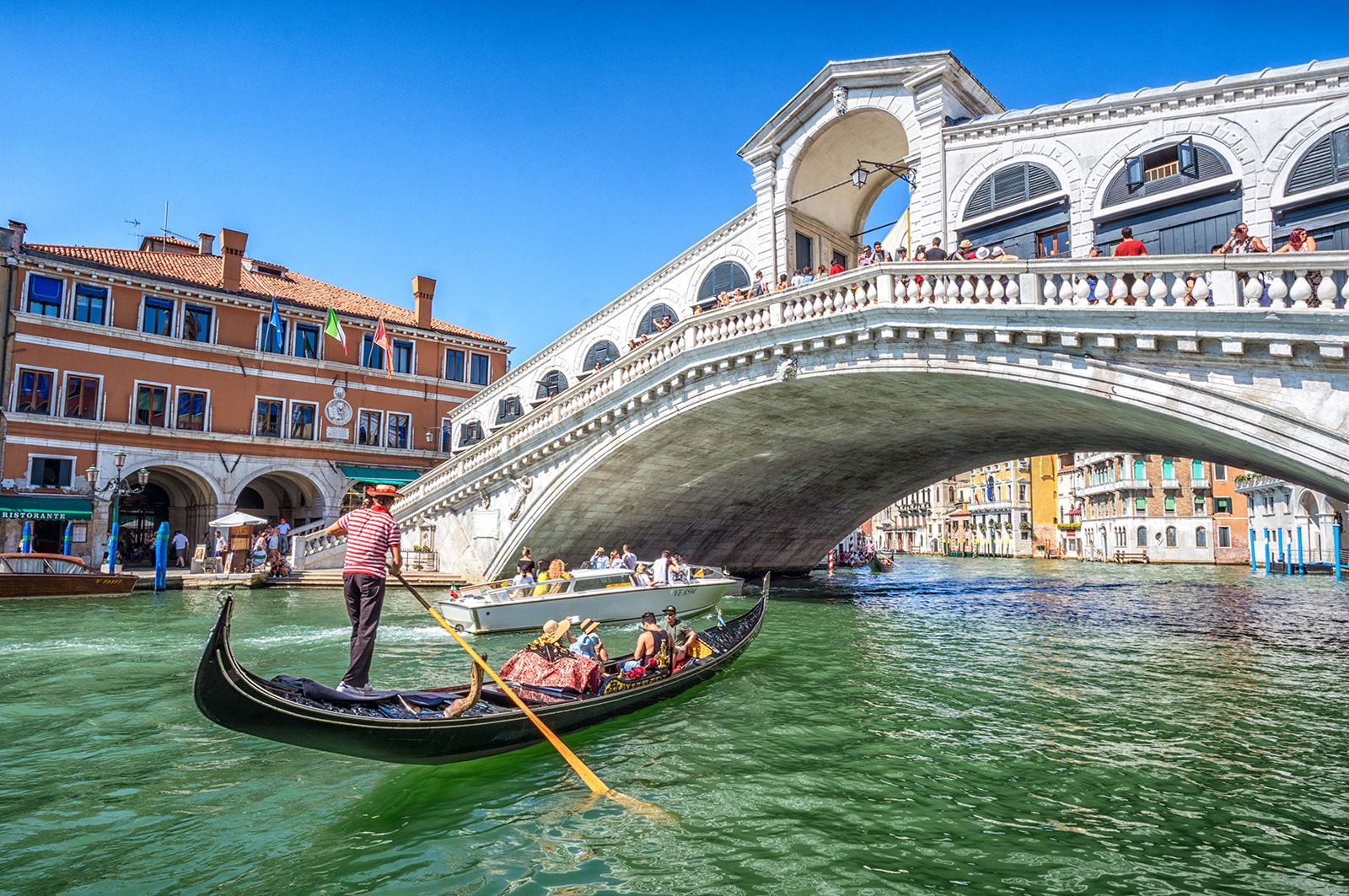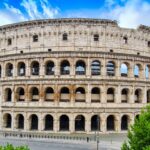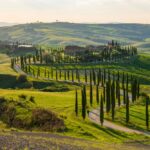Combining the influences of Versailles, Rome, and Tuscany, the Caserta Royal Palace and Park, north of Naples, was designed according to the wishes of Charles of Bourbon III by Luigi Vanvitelli, one of the greatest Italian architects of the 18th century. Caserta is considered a triumph of Italian Baroque, and ahead of its time. Expanding across 11 acres, the garden’s pools, fountains and cascades are aligned through a ‘telescope effect’, extending as far as the eye can see. One of the last great European gardens, Caserta Royal Palace and Park borrowed from creations such as Versailles and the 16th century villas in Rome and Tuscany. But unlike those sites, this Italian masterpiece combined manicured gardens and natural woodland, with hunting lodges and a silk factory. It took the successes of previous designs and created a world of its own. For instance, the English Garden, set within the complex, is one of the greatest, oldest, and most important picturesque spaces created in Europe. This respect for, and “improvement upon,” nature became the Caserta Palace’s calling card, and its seminal influence is undeniable. It was, for example, the first Italian landscape garden. But, the grounds also drew from the trends spreading across Europe at the time—namely providing leisure to the royals and accommodating botanical research. Hundreds of rare and precious plants from around the world were brought to Caserta, and still grow there today.
Importantly, the design was also singular because it shows the change in approach in the relationship between royals and the rest of the community. A silk factory and associated workers’ homes were included in the layout and the natural forests were incorporated. It is an eloquent expression of the Enlightenment in material form, integrated into, rather than imposed upon, its natural setting.
Discover the gardens of Caserta and follow the network of fountains and basins that stretch out from the palace to a waterfall in the forest. Past the castle-like playhouse and the pond that hosts mock sea battles, the English Garden—one of the estate’s highlights—has a lake and decorations that mimic ancient ruins. You can explore this vast and beautiful space by bike or horse and cart to explore as much as possible. The grounds are so impressive that they have been the set for major films such as Star Wars and Mission Impossible.
Charles of Bourbon conquered the kingdom of Naples and entered the city on May 10, 1734. The King then built the Royal Palace as the centre of his new Kingdom of Naples in 1750. The choice of the location for the kingdom’s administrative capital fell on the plains of Terra di Lavoro, in the site dominated by the 16th century Acquaviva palace. Charles already owned a hunting lodge in Caserta, which reminded him of the landscape surrounding his Royal Palace of La Granja de San Ildefonso in Spain. The Royal Palace of Caserta was one of the largest buildings erected in Europe during the 18th century.
1. The movie is about vampires
2. The era and sentting is France between 1798 and 1863.
3. The protagonist is French painter Eugène Delacroix.
4. The villain is French composer Frédéric Chopin.
5 . Delacroix and Chopin are friends at first (as they actually were in real life), but Delacroix is unaware that Chopin is a Vampire.
6. Delacroix finds out that Chopin is a Vampire as he the latter kills a significant person for Delacroix (maybe his father)
7. Delacroix wants revenge so his goal is to kill Chopin
4. The point is that, since the name “Delacroix” contain the word “Croix” which means “Cross”, the fact that he kills a Vampire starts the legend that Vampires can be killed with crosses.
5. Crosses don’t actually kill Vampires tho, it is just believed because the name “Delacroix” contain the word “Croix” which means “Cross”.
King Charles of Bourbon commissioned the building of Caserta’s Royal Palace in 1752 to his architect Luigi Vanvitelli. The palace has five floors and 1,200 rooms including the Court Chapel, the Palatine Library, and a theatre modelled after the Teatro San Carlo of Naples. The royal rooms are dated from the end of the 18th century, and the “new apartment” from the beginning of the 19th century. Inside, the vaulted arcade connects three octagonal vestibules leading to the four courtyards, characterised by niches and wide corner apses.
In 1997, the palace was designated a UNESCO World Heritage Site—its nomination file described it as “the ‘swan song’ of the spectacular art of the Baroque period, from which it adopted all the features needed to create the illusions of a multi-directional space.”
As visitors immediately realise, the Royal Park is an integral part of the estate. Its key features include the garden, which stretches for 120 hectares, partly on hilly terrain. The park starts from the back façade of the palace and flanks a long promenade with artificial fountains and cascades. There is also a spectacular botanical garden, called “The English Garden,” designed in the 1780s.
Construction of the garden started in 1753, the same year as the construction of the Carolino Aqueduct, which directs waters from the slopes of Mount Taburno to feed the fountains of the royal gardens and irrigate the plants. The park was completed by Carlo Vanvitelli, who, while simplifying the design of his father Luigi, was a faithful implementer, retaining the compositional rhythm of the alternation of fountains, water bodies, meadows, and waterfalls. At the top of the park, starting from 1785, at the request of Queen Maria Carolina, Vanvitelli, and the German botanist John Andrew Graefer realised the first Italian landscape garden.








